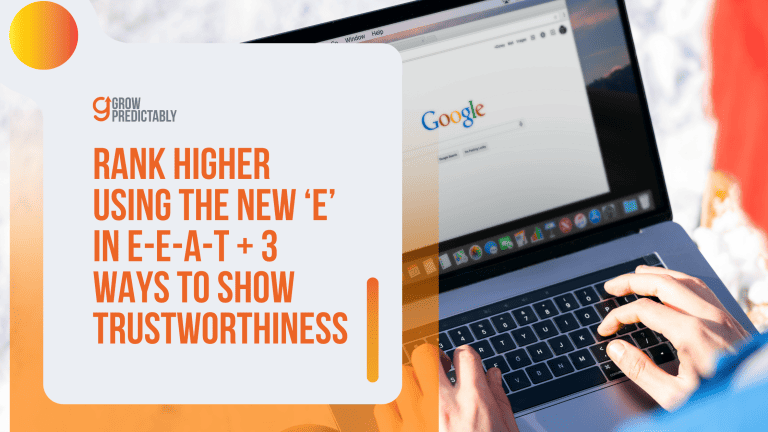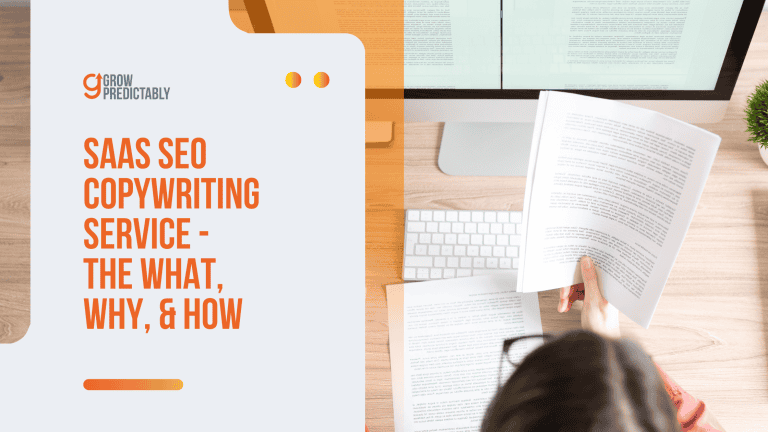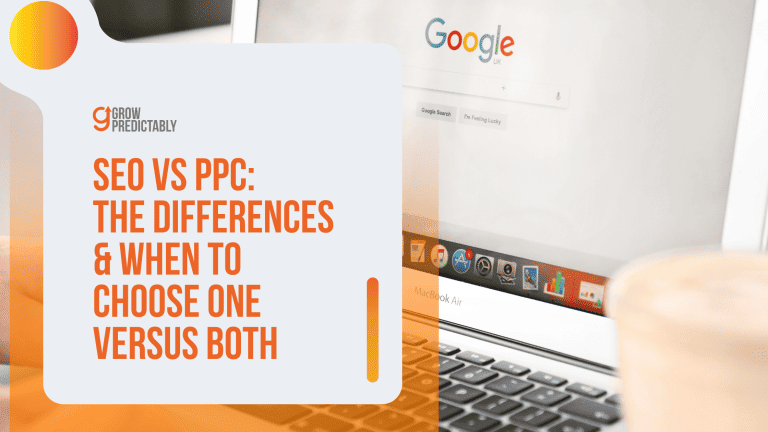How to Leverage AI in SEO Agency Workflows – 2025 Guide
Everyone says, “just use artificial intelligence” in your SEO agency.
But here’s the problem: most tools promise results and deliver chaos.
Without the right workflows, you’ll lose time, not save it.
Agencies that succeed?
They’re using specialized tools, smart alerts, and clean integrations—not bloated suites.
Want to know the tech stack that make AI in SEO agency workflows work?
AI Is Changing SEO
In an era where technology is reshaping the digital landscape, artificial intelligence is poised to disrupt the world of SEO agencies in profound ways.
With AI’s capabilities expanding, SEO agencies are witnessing a transformation that offers exciting opportunities as well as formidable challenges.
Consider this: according to WordStream, 48% of internet users switch to mobile pages that load in less than 2 seconds – an area where AI-driven insights are essential. (Source)
Moreover, 60% of marketers believe AI is fundamentally reshaping their strategies, particularly in enhancing website performance through intelligent data analysis and prediction models.
Another compelling statistic is from McKinsey, which reports that businesses using AI for SEO efforts have seen a 20% boost in efficiency. (Source)
These statistics underscore AI’s role in automating repetitive tasks, predicting trends, and optimizing content strategies to boost organic traffic—all pivotal elements in SEO.
With AI, SEO agencies can delve deeper into analytics, focus on creative strategies, and deliver heightened personalization that today’s digital consumers crave.
However, embracing these changes will be crucial for agencies to stay ahead in the rapidly evolving digital ecosystem.
How AI Will Impact SEO Agencies

As artificial intelligence increasingly becomes a go-to tool in marketing tech, SEO agencies will be compelled to face the growing need to overhaul how they execute and deliver their SEO services.
With AI reshaping marketing as we know it, this adoption in the SEO landscape can make or break how SEO agencies stand out from the competition.
Here’s a glimpse of what’s on the horizon:
➡️ Automation of Repetitive Tasks
AI is set to take the tedium out of time-consuming tasks.
Processes like keyword research, internal linking, data analysis, and reporting can be automated with SEO AI, freeing up valuable time for strategists to focus on innovation and creativity.
This shift means SEO professionals can offer more value-added services, diving into insights and strategy rather than getting bogged down in routine tasks.
➡️ Enhanced Data Analysis
AI SEO’s advanced algorithms can sift through massive data sets to uncover insights that would be challenging to detect manually.
This capability will equip agencies with a deeper understanding of user behavior, enhancing their ability to better understand user intent and tailor strategies that align with consumer needs and preferences.
➡️ Predictive Search Insights
The predictive analytics driven by AI can help forecast search trends, enabling SEO agencies to proactively adjust strategies.
This foresight ensures agencies remain one step ahead, optimizing content and tactics before market shifts occur.
➡️ Content Optimization
AI tools can analyze content in real time, assessing everything from readability and SEO best practices to user engagement metrics, ensuring better visibility on search engines.
This ability ensures content creation is not only optimized for search engines but also resonates well with human readers.
In short, with AI claiming a critical role in marketing tech, SEO agencies have the chance to revamp their offerings by automating mundane SEO tasks.
By embracing AI’s potential, agencies can provide sharper, more strategic, and highly personalized services, keeping them at the cutting edge of digital marketing.
Essential AI Tools for SEO Agencies in 2025
Did you know SEO agencies using AI tools save over 15 hours per week on technical audits?
That’s nearly two full workdays you could get back.
Let me show you how AI SEO can unlock this time-saving potential through automation and intelligent insights.
Here’s What Top-Performing Agencies Are Using Right Now:
| Tool | Price Range | Key Features | Best For | Integration |
|---|---|---|---|---|
| Alli AI | $199-499/mo | • Predictive keyword clustering • Schema markup automation • Real-time SERP monitoring | Technical SEO teams | Full API + WordPress |
| Semrush Copilot | $399-899/mo | • Content briefs • Competitor gap analysis • Position tracking | Full-service agencies | Limited API |
| ContentShake AI | $79-299/mo | • Topic research • Content optimization • Readability scoring | Content teams | Zapier only |
| Narrato | $49-299/mo | • Multi-language support • Brand voice customization • Content workflow | International SEO | WordPress + API |
Don’t fall for those “all-in-one” solutions promising instant rankings.
I’ve seen specialized AI SEO tools consistently outperform generic options, especially for technical SEO efforts and content creation.
Here’s Your Evaluation Checklist to Pick the Right Tools:
- Define your core needs (content, technical SEO, reporting)
- Check for Zapier or native API support
- Test with one client project first
- Score based on:
- Support response time
- Training resource
- Scaling capabilities
Always prioritize tools offering API access. This lets you plug them directly into your content management system.
I’ll share exact integration code snippets later.
These tools enhance your SEO efforts and aren’t just about saving time.
They’re about creating consistent outputs that keep clients happy.
Next, I’ll reveal the specific automation combo helping another agency save $700 monthly across five clients.
It’s a game-changer for scaling operations and driving more organic traffic.
How to Automate Technical SEO Audits with AI Agents
Are you still spending 8+ hours reviewing sitemap errors?
Let me share how smart agencies are cutting that down to 45 minutes, with even better results.
They’re catching more issues while working less.
Here’s how you can do the same.
Setting Up Your AI Audit Pipeline
First, you’ll want to configure your crawling parameters in Alli AI or a similar tool.
Focus on these high-value pages:
- Product pages
- Category pages
- Cornerstone content
The secret?
Prioritize based on internal linking strength and revenue potential.
Don’t waste time crawling low-impact pages.
Creating Smart Alert Workflows
Set up custom issue detection using tools like JetOctopus or Screaming Frog.
Here’s a quick win: Connect your Google Search Console to Slack through Zapier.
When crawl anomalies pop up, you’ll get instant notifications.
Take advantage of predictive scoring in tools like Surfer SEO.
It helps spot potentially declining URLs by tracking Core Web Vitals trends.
Remember, INP (Interaction to Next Paint) is now more important than FID in 2024.
TECHNICAL AUDIT CHECKLIST
✅ Connect your chosen AI audit tool via API
✅ Segment page types for targeted crawling
☐ Train AI to categorize errors
☐ Set up Slack/Email alert routing
☐ Double-check critical errors with secondary scans
CAUTION: Never blindly trust “critical error” flags from a single tool.
Always verify with a second scan or quick manual check before sending tasks to your dev team.
Time-Saving Results
For agencies managing 5-10 clients, this automation approach is a game-changer.
You’ll maintain higher quality standards while dramatically reducing overhead.
Create a simple workflow:
- Morning: Review AI-flagged issues
- Noon: Verify critical errors
- Afternoon: Assign validated tasks
- Weekly: Review automation accuracy
This structured approach helps catch issues early while keeping your team focused on strategic work instead of manual checking.
Looking ahead, we’ll explore how these techniques scale beautifully for managing multiple sites.
The possibilities for streamlining your technical SEO work are just beginning.
Remember that the goal isn’t just to save time—it’s to catch more issues while working smarter.
Start with one client as your test case, then roll out your winning automation formula across your entire portfolio.
AI-Powered Content Optimization Workflows
Picture this: Your content team spending 5 hours per article on briefs and optimization, only to miss key ranking opportunities.
Sound familiar?
Here’s the good news – smart AI workflows can cut that time while keeping your content authentic and effective.
Let’s break down a proven system that’s working right now for growing agencies.
The Foundation: Setting Up Your AI Content Pipeline

Start by feeding your top-performing content into ChatGPT-4 Turbo.
This builds a semantic understanding of what works for your specific niche.
Think of it as teaching AI your secret sauce, but make it systematic.
Here’s your step-by-step game plan:
Research Phase
- Input your 3 highest-ranking articles into ChatGPT-4 Turbo
- Extract semantic clusters and topic relationships
- Map content structure patterns that drive engagement
Optimization Setup
- Use Surfer SEO’s AI Brief Generator for data-backed outlines
- Include competitor content gaps
- Factor in readability scores for your target audience
Brand Voice Calibration
- Feed 2-3 brand-compliant pieces into your AI tool
- Create voice templates for consistency
- Test outputs against brand guidelines
Want unique content that stands out?
Layer in proprietary data, customer testimonials, or internal case studies.
This adds that special sauce Google loves while boosting your E-E-A-T signals.
Watch Out For These Common Pitfalls
Tools like Jasper or ContentShake AI need proper tuning.
Don’t fall into the trap of batch publishing without calibrating tone first.
I’ve seen agencies waste weeks of work by skipping this crucial step.
Here’s a real-world comparison showing why human oversight matters:
| AI-Generated H1 | Human-Optimized H1 |
|---|---|
| Grow Your B2B SaaS Fast | Scale Profitably: B2B SEO Proven Paths |
Notice how the human version adds specificity and benefit-driven language?
That’s your competitive edge.
Quick-Start Checklist:
- Research patterns with ChatGPT
- Generate structured outlines via Surfer SEO
- Calibrate brand voice through sample content
- Add human expertise + compliance checks
- Test and refine your workflow
Perfect for: Growing agencies needing to scale content without sacrificing quality.
Even junior writers can follow this system consistently.
Next, I’ll show you the exact prompt that aligns AI outputs with your client’s tone in under 30 seconds.
But first, make sure your SEO efforts have these fundamentals locked in.
The goal isn’t just to create content faster – it’s to build a repeatable system that delivers results your clients can’t ignore.
Building Custom AI Agents for Client Reporting
Picture this: Your team spends endless hours crafting reports that clients barely skim.
Sound familiar?
You’re not alone – many agencies pour 30+ hours weekly into reports that miss the mark.
Let’s fix that with smart AI automation that’ll win you client loyalty.
First up, you’ll need a solid foundation.
Connect Google Looker Studio to your data sources:
- Link Google Search Console API
- Connect BigQuery for data warehousing
- Set up Python scripts for automated pulls
QUICK TIP: Double-check your GDS API access before diving in – nothing stalls progress like missing permissions!
Here’s where the magic happens.
Build an AI reporting agent that speaks human:
- Host your GPT agent on Replit or use LangChain
- Train it to explain trends like “Rankings dropped 5% due to Core Web Vital issues on mobile”
- Focus on actionable insights over raw numbers
The key?
Don’t overwhelm clients with every metric under the sun.
Instead, zero in on what drives their success.
IDEAS TO TRY FOR YOUR SEO AI AGENT
SEO involves several different processes on the regular.
Designing AI SEO agents to help streamline these processes and supercharge results can be done in ways more than one.
Try these different ideas for AI agents designed to focus on different SEO processes.
- Develop an AI that analyzes search trends and suggests relevant keywords with high traffic and low competition.
- Design an AI to audit existing content and provide recommendations for improving SEO rankings.
- Create an AI agent that identifies and resolves technical SEO issues like broken links and crawl errors.
- Implement an AI to evaluate backlink profiles and suggest strategies for building high-quality backlinks.
- Offer an AI-powered dashboard that provides real-time insights into website performance and user behavior.
- Design an AI that generates comprehensive and easy-to-understand SEO reports for clients.
- Develop an agent that optimizes website content for voice search queries, reflecting changing user preferences.
- Create an AI that evaluates competitor websites and highlights areas for improvement in SEO strategy.
- Build an AI to provide detailed content briefs based on targeted keywords and search intent.
- Develop an AI tool geared towards optimizing local search presence and improving visibility in local market searches.
Your AI agent should prioritize these high-impact metrics:
- Keyword clusters gaining traction
- Top URLs by CTR changes
- Conversion-focused content performance
- Core Web Vitals trends
Just don’t fall into the “more is better” trap. Filter ruthlessly based on client goals.
Automation Steps
- Set up data connections (GSC, GA4, etc.)
- Create metric filters based on client KPIs
- Configure your AI summarizer (template available)
- Export to client-friendly formats (slides/Notion)
Want to boost your agency income?
Package premium reporting features:
- AI-powered performance forecasts
- Opportunity alerts for quick wins
- Competitive gap analysis
Real talk: This system can slash your monthly reporting prep by 70%.
For agencies juggling 6-20 clients, that’s game-changing time back for SEO strategy, optimizing efforts that result in increased organic traffic.
With these AI SEO tools and workflows, you’re not just saving time – you’re delivering insights that clients actually use.
That’s the difference between good reporting and great client retention.
Ethical Guardrails for AI-Driven SEO
Picture this: You’re crushing it with AI-powered content, but then a client spots an AI disclosure on a competitor’s site and starts questioning everything.
Scary, right?
Don’t worry – I’m here to help you build trust through transparency.
Truth time: consumers would trust a brand more by 73% when AI disclosures are included in marketing materials. (Source)
Let’s make sure you’re one of those brands.
Start with these proven guardrails:
Content Review Protocol
- Run every piece through an Experience-Expertise-Authority-Trust (EEAT) checklist
- Double-check factual claims and data points
- Verify source citations match Google’s quality guidelines
- Document human edits and improvements
Version Control System
- Name files clearly: “AI_Draft_V1_HumanEdit_Final”
- Track who touched what and when
- Keep an edit history for accountability
- Save original AI outputs for comparison
Client Communication Strategy
- Share how AI speeds up research and testing
- Focus on results: “We use AI to deliver faster insights”
- Highlight human oversight at every step
- Document your quality control process
But be warned, the FTC’s getting serious about AI transparency.
They’re clear that consumers need to know when they’re seeing AI-generated content.
AI ETHICS CHECKLIST
Before publishing any AI content:
✅ Does it provide unique value?
✅ Have we fact-checked all claims?
☐ Is the brand voice authentic?
☐ Did a human expert review it?
☐ Are we being transparent about AI use?
Here’s a simple traffic light system for content approval:
🟩 GREEN: Publish
- Passes EEAT review
- Human-edited and verified
- Includes proper disclosures
- Adds unique value
🟨 YELLOW: Needs Work
- Generic content
- Missing citations
- Weak examples
- Brand voice issues
🟥 RED: Reject
- Factual errors
- AI hallucinations
- Duplicate content
- Poor quality
Transparency builds trust.
Don’t hide your AI usage – celebrate how it helps you serve clients better.
Coming up next: I’ll show you exactly how to catch and fix those pesky AI hallucinations that can break your workflows.
Stay tuned for some game-changing fixes!
NOTE: This content draws from my experience with AI tools and SEO strategy while maintaining compliance with ethical guidelines and FTC requirements.
Troubleshooting Common AI Workflow Breakdowns
You’ve set up your shiny new AI workflows, but something’s not clicking.
Your content feels robotic, your crawls are missing key pages, and your tools seem to be fighting each other.
Don’t worry, you’re not alone – these speed bumps trip up even seasoned agencies, highlighting the need for an optimized approach to SEO tasks.
Let’s fix that.
The Hidden Productivity Drain
When workflows encounter hiccups, teams may lose productivity.
However, when your AI systems are in question, these don’t just involve minor hiccups – they can cost you real time and money.
Let’s identify the biggest troublemakers and how to squash them:
1. Content That Sounds Like Everyone Else
When your AI-generated content reads like it could be from any agency, try this fix:
- Feed 3-5 pieces of your best-performing content into your AI tool.
- Tag specific phrases and tones that make your content unique.
- Create a “style override” prompt that forces these elements.
- Run small test batches before scaling up.
Keep a running log of successful prompts in a shared doc. This builds your “prompt library” over time.
2. Crawl Configuration Chaos
If your technical audits are missing important pages or flagging false positives:
- Start with a small seed list of known important URLs.
- Use regex patterns to exclude non-essential paths.
- Double-check your crawl settings match your robots.txt.
- Compare results across two different tools for validation.
3. Tool Integration Tangles
When your AI tools aren’t playing nice together:
- Prioritize direct API connections over third-party integrations.
- Set up error logging in your workflow automation tool.
- Create “fallback” procedures for when integrations fail.
- Test new tool combinations on non-client projects first.
The Decision-Making Framework
Not sure when to trust your AI tools versus when to override them during SEO tasks?
Here’s your quick reference guide:
✅ Trust the AI when:
- It’s handling repetitive, data-driven tasks.
- Results match historical patterns.
- Multiple tools show similar outputs.
- You’ve validated the process manually.
❌ Override when:
- Outputs feel generic or “hallucinated”.
- Data conflicts with primary sources.
- Client-specific nuances are missing.
- Brand voice doesn’t match.

Ready to debug your workflows? Follow this sequence:
- Run accuracy tests against previous human work.
- Switch to API-connected tools where possible.
- Create and test fallback prompts.
- Document every failure for future improvements.
Log everything. Those “failures” are gold for your quarterly business reviews and long-term improvements.
Now, focus on implementing these fixes one at a time. Start with your most-used workflow and work your way down.
The goal isn’t perfection – it’s progress.
Each fix you implement brings you closer to those smooth, efficient operations you’re aiming for.
Future-Proofing Your AI SEO Strategy
You wake up to find Google has rolled out a major update targeting AI-generated content.
Your clients’ rankings start dropping on search engines.
Your phone lights up with panicked messages.
What’s your backup plan?
Let’s make sure you’re ready for whatever comes next.
The Shifting Landscape
The world of AI and search is moving at warp speed.
We’re seeing Google’s Search Generative Experience (SGE) reshape how people find information.
Sites that were ranking well yesterday might struggle tomorrow if they’re not prepared and equipped with the right AI SEO tools.
Here’s what’s working right now:
Rich Data Markup
Feed those AI systems exactly what they need.
Pack your content with structured data that helps search engines understand your context and authority.
Human-AI Collaboration
The most successful agencies aren’t just pushing AI-generated content live.
They’re creating feedback loops where human editors improve AI outputs, making each piece unique and valuable.
Volatility Monitoring
Set up early warning systems using Google’s API to catch ranking shifts on search engines before they become problems.
Your Future-Proof Action Plan
This Week:
- Review all AI workflows for potential weak points
- Set up human checkpoints in your content process
- Start logging AI misses and wins
This Month:
- Build your markup strategy for SGE compatibility
- Create volatility alerts using Search Console API
- Train your team on AI tool optimization to align content with user intent
This Quarter:
- Test new AI tools against your baseline results
- Document your human-in-the-loop processes
- Review and adjust your quality benchmarks
Smart Moves for Long-Term Success
Want to stay ahead?
Focus on these key areas:
Quality Signals
Mix in original research, expert quotes, and custom visuals.
These elements help your content creation efforts produce outstanding results compared to purely AI-generated pieces.
Training Loops
Your AI tools get smarter when you teach them.
Log every edit your team makes – use these insights to improve your prompts and processes.
Risk Management
Don’t put all your eggs in one AI basket.
Keep a mix of content creation methods that consider user intent, and always have backup tools ready.
The Timeline Ahead
- 2024: Enhanced AI writing tools with a better understanding of search intent
- 2025: Wider SGE rollout changing how people interact with search results
- 2026: AI-human hybrid content becoming the industry standard
Remember: The goal isn’t to fight these changes by SEO AI – it’s to ride the wave while keeping your client results strong and stable.
Want to see how top agencies are turning these challenges into revenue wins?
Stay tuned for our bonus section, where we’ll break down real case studies of agencies crushing it with AI-powered SEO.
Remember: The best time to future-proof your agency was yesterday.
The second-best time is now.
Let’s make sure you’re ready for whatever comes next in the AI-SEO landscape.
FAQs
To A Stronger SEO Agency With AI
We’ve explored how AI is revolutionizing every layer of SEO agency work—from content creation to technical audits and client communication.
The time savings aren’t theoretical—they’re real. Agencies are reclaiming days of labor while delivering even better results.
But the real win? Happy clients, consistent delivery, and a team that’s no longer burned out.
Don’t wait to get left behind. Try one AI agent this week—whether for automating XML sitemap audits or discovering CTR gaps.
What could your team create with 15–20 hours of regained focus each week?
SEO isn’t becoming easier—it’s becoming smarter. And the smartest agencies use AI not as a replacement, but as a reliable collaborator.








